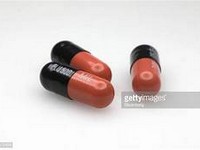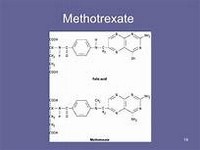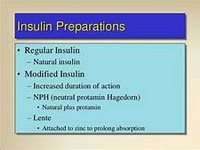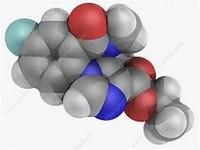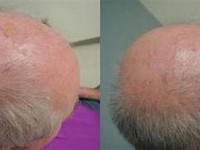Lepirudin

Lepirudin
CLINICAL USE
Anticoagulant:Patients with heparin associated thrombocytopeniaDOSE IN NORMAL RENAL FUNCTION
0.4 mg/kg bolus, followed by 0.15 mg/kg/hr (max 16.5 mg/hour) infusion adjusted according to APTT, usually for 2–10 days (maximum body weight 110 kg)PHARMACOKINETICS
DOSE IN RENAL IMPAIRMENT
GFR (mL/MIN)
45–60 Reduce bolus to 0.2 mg/kg and infusion rate by 50%30–44 Reduce bolus to 0.2 mg/kg and infusion rate to 30% of normal15–29 Reduce bolus to 0.2 mg/kg and infusion rate to 15% of normal<15 Avoid, or if APTT is below lower therapeutic limit then 0.1 mg/kg on alternate days as an IV bolusDOSE IN PATIENTS UNDERGOING RENAL REPLACEMENT THERAPIES
IMPORTANT DRUG INTERACTIONS
Potentially hazardous interactions with other drugsThrombolytics: may increase risk of bleeding complications; enhance effect of lepirudinAntiplatelets and anticoagulants: increased risk of bleeding complicationsADMINISTRATION
Reconstition
1 mL water for injection or sodium chloride 0.9%Route
IVRate of Administration
0.15 mg/kg/hourComments
Further dilute with sodium chloride 0.9% or glucose 5% if for infusionBolus concentration should be 5 mg/mL and infusion 2 mg/mLChange syringe at least every 12 hours after start of infusionOTHER INFORMATION
Dialysed out if used with high flux polysulfone dialysers (Frank RD, Farber H, Stefandis I, et al. Hirudin elimination by hemofiltration: a comparative in vitro study of different membranes. Kidney Int suppl. 1999, Nov; 72: s41–5)Lepirudin may also be used for the prevention of clotting in the extracorporeal circulation during haemodialysis and haemofiltration (non-licensed indication)Dose for dialysis anticoagulation if <4.5 hr session is 0.141– 0.152 mg/kg as an IV bolus pre-dialysis. Alternative is 0.01 mg/kg IV bolus, followed by a continuous infusion of 0.01 mg/kg/hour, adjusted to APTT 1.5–2 normal (0.005 mg/kg/hr was adequate). (Schneider T, Heuer B, Deller A, et al. Continuous haemofiltration with r-hirudin (lepirudin) as anticoagulant in a patient with heparin induced thrombocytopenia. Wien Klin Wochenschr. 2000, Jun; 112(12): 552–5.)Recent reports of 7 cases of severe anaphylactic reactions resulting in 5 fatalities and at least 6 of the cases were after re-exposure. In some cases it was used outside its therapeutic indication.424 LEPirUdinUse with great caution, as it cannot be reversedResults from studies in pigs have found that Von Willebrand factor 66 iu/kg can reduce bleeding timereferences:1. Nowak G, Bucha E, Brauns I, et al. Anticoagulation with r-hirudin in regular haemodialysis with heparin-induced thrombocytopenia (HIT-II). Wien Klin Wochenschr. 1997; 109(10): 354–82. Van Wyk V, Badenhorst PN, Luus HG, et al. A comparison between the use of recombinant hirudin and heparin during haemodialysis. Kidney Inter. 1995; 48: 1338–43Significant accumulation with long-term use in renal impairment.
See how to identify renal failure stages according to GFR calculation
See how to diagnose irreversible renal disease
Home


